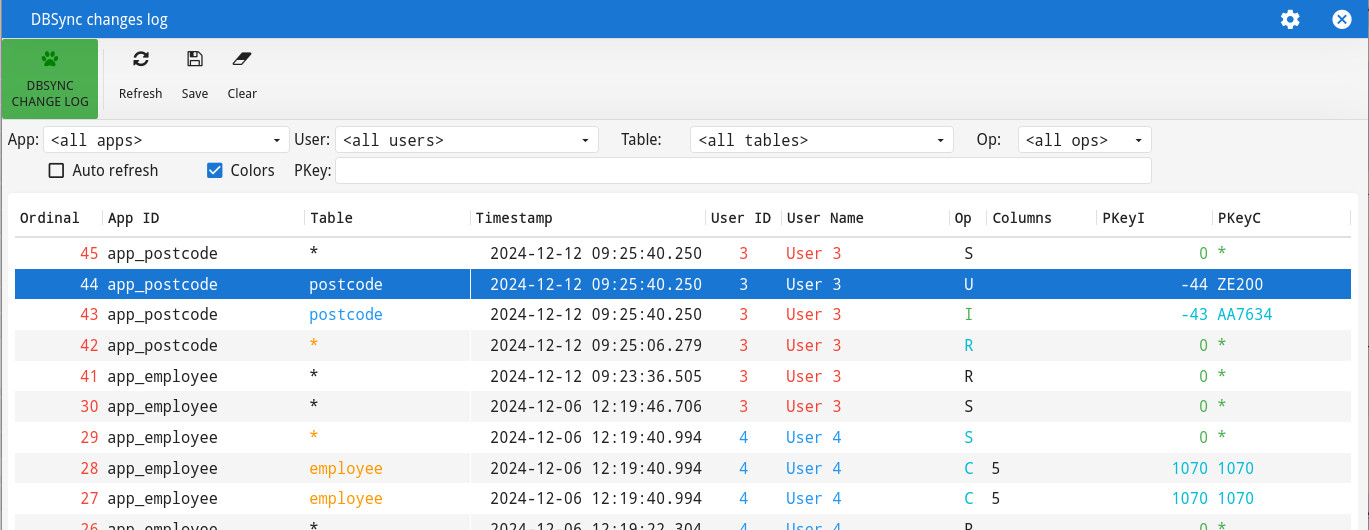Change log viewer
The DB Sync change log viewer allows you to watch synchronization operations made by users/apps in the central database.
-
Open the
dbsync.htmlstarter page in a browser:
For example:http[s]://host:port/ua/web/dbsync_setup_server_config/dbsync.htmlhttp://toro:6394/ua/web/dbsync_setup_server_config/dbsync.html -
Select Sync log viewer.
The change log viewer presents a list of synchronization events made by users/apps, for a given SQL table row identified by its primary key:

The fields at the top of the list allow you to filter the change log by apps, users, tables, operations and primary key values.
-
Ordinal: An ordinal number that allows to sort the sync events in the order they occur.
-
App ID: Identifies the DB Sync client application.
-
Table: The name of the SQL table.
-
Timestamp: The UTC+00:00 timestamp indicating when the sync event occurred.
-
User ID: The ID of the user who has done the change.
-
User Name: A clear name for the user.
-
Op: The type of synchronization operation.
-
Columns: The column indexes in the SQL table, for field-wise updates.
-
PKeyI: The primary key value when the type is an integer. Otherwise, the ordinal number as negative integer.
-
PKeyC: The primary key value when the type is character string or a composite primary key.
-
R - A full copy of the application database was done (occurs typically when a new app instance is started for the first time)
-
S - A user/app has done a regular sync process and locally applied changes registered in the central database change log.
-
I - An new row has been inserted.
-
U - All fields of an existing row have been modified.
-
C - Some fields (not all) of an existing row have been modified.
-
D - A row has been deleted.
-
Refresh - Refresh the list with the latest data found in the change log.
-
Save - Save a copy of the change log into a flat text file.
-
Clear - Clear the change log. It is recommended you save a copy of the change log before clearing.Important:
Clearing the change log will reset modification timestamps and force a full sync procedure for all client users/apps.